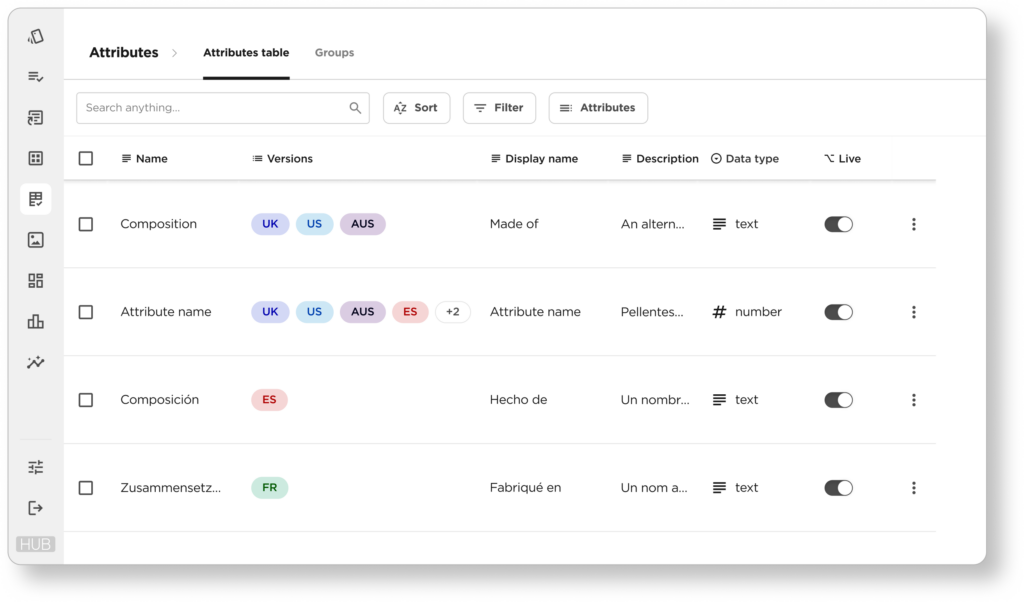
Tsveta Pandzherova
Customer success manager @Stylib
If you’re a supplier or manufacturer of architectural materials – lighting, cladding, surfaces, acoustic panels, and beyond, you know that managing product data is far from simple.
Spec sheets live in Excel, images hide in Dropbox, updates get buried in email threads, and your sales team constantly asks:
“Which version is the latest?”
Meanwhile, marketing struggles to keep the website updated, distributors need files in specific formats, and architects request certifications, fire ratings, or composition details.
This is where a PIM comes in.
What is PIM?
PIM stands for Product Information Management. It’s software designed to help suppliers and manufacturers collect, manage, and distribute product information from a single source of truth.
Instead of juggling spreadsheets and folders, a PIM centralises everything: specifications, certifications, images, and product variants. It ensures your data is complete, accurate, and always up to date.
Why suppliers and manufacturers need it
For suppliers: PIM keeps your sales, marketing, and technical teams aligned. Everyone works from the same verified data, reducing errors and delays in pitching or updating products.
For manufacturers: PIM streamlines the flow of data from production to market. No more manual reformatting for partners or compliance checks for every region, automation ensures consistency.
What does a PIM do?
A PIM typically supports four core functions:
1. Centralisation of product data
Rather than managing product information in disconnected spreadsheets, folders, or systems, a PIM brings everything together. This includes:
- Titles, SKUs, and categories
- Technical specifications and dimensions
- Certifications and performance data
- Product variants (finishes, formats, sizes)
By centralising everything, a PIM reduces redundancy and eliminates version control issues.

2. Standardisation and structuring
Product data often needs to be formatted differently depending on the audience – internal teams, clients, distributors, or digital platforms. A PIM allows users to:
- Standardise attribute naming and values
- Group information logically (e.g. fire ratings, acoustic performance)
- Create templates for different product types
- Ensure consistency across all outputs
This makes product information more usable, readable, and scalable.

3. Multi-channel distribution
Once the data is centralised and structured, a PIM makes it easy to distribute across multiple channels, including:
- Websites
- Digital catalogues
- Sales tools
- Internal systems
- Partner or distributor platforms
This ensures that the latest version of a product’s information is always available, wherever it’s needed.

4. Streamlined collaboration
A good PIM allows product, marketing, sales, and technical teams to work from the same source of truth. Edits are tracked, roles are defined, and approvals can be streamlined. This reduces internal friction and improves productivity across departments.
Why it matters for architectural materials
Your products are technical and regulation-heavy. A single error in fire rating or missing certificate can cost you the spec.
PIM solves that by giving you control and scalability.
Control your catalogue
While many general-purpose tools exist, not all are built for the complexity of architectural products, from multiple product formats and regional standards to the need for specification-ready visuals.
Stylib Hub is a PIM built specifically for architectural suppliers. If you want to centralize, structure, and share your product data with zero friction, this is your next step.
Stylib Hub gives every product a consistent, customizable data structure with attributes for technical specs, certifications, dimensions, finishes, and more. Instead of scattered fields or improvised formats, you get a clean, scalable system that supports filtering, validation, and export across any channel or platform.

Datasheets, images, test reports, and certificates all live in one place, connected to the correct product and version. Stylib Hub makes it easy to upload, organise, and update files so you always know what’s current, and you never have to dig through folders or chase the right PDF again.

Not every audience needs the same data. Stylib Hub lets you configure outputs for different destinations, whether it’s a spreadsheet for a distributor, a selection for a client, or a structured feed for your digital tools. One source of truth, multiple outputs, no copy-pasting.

